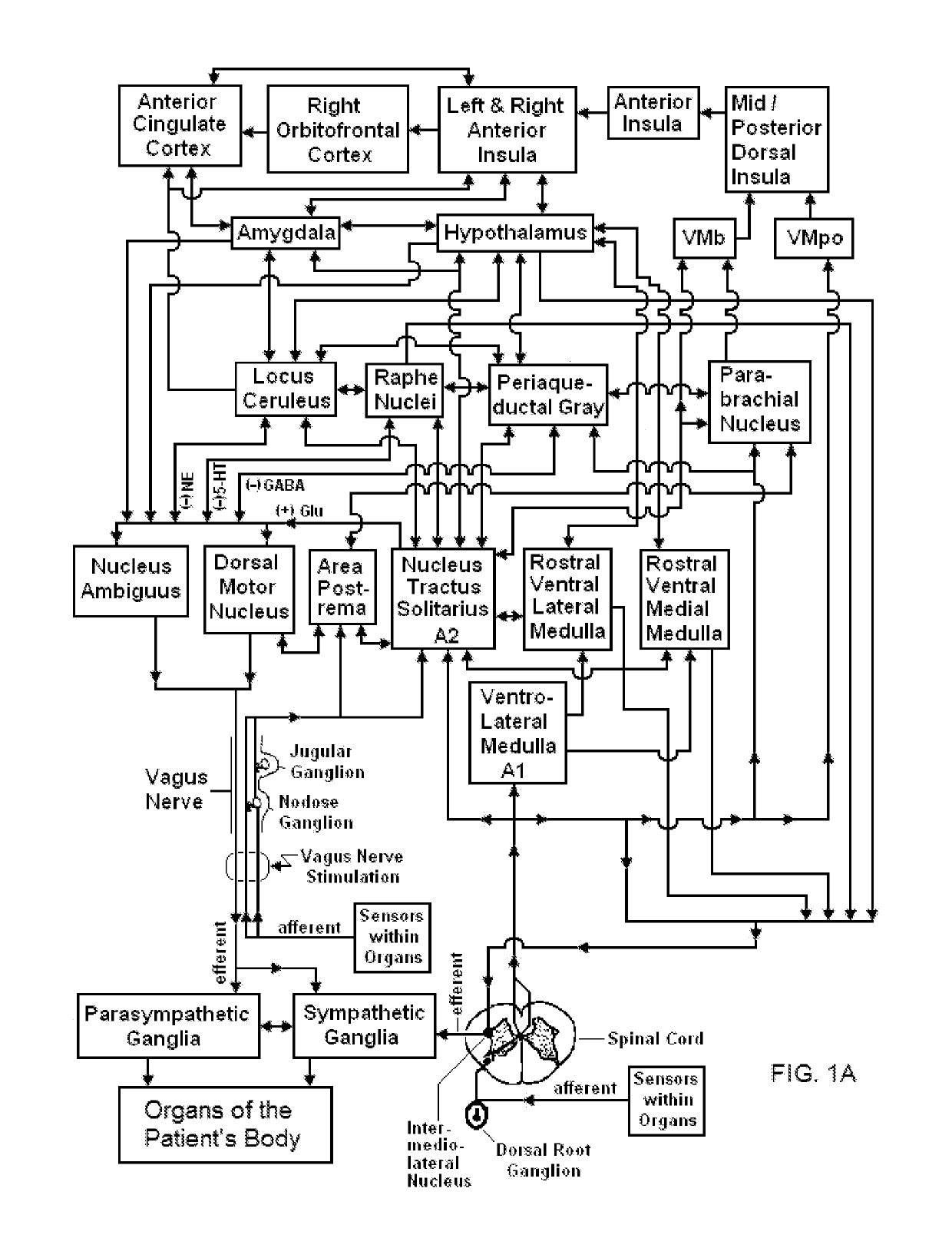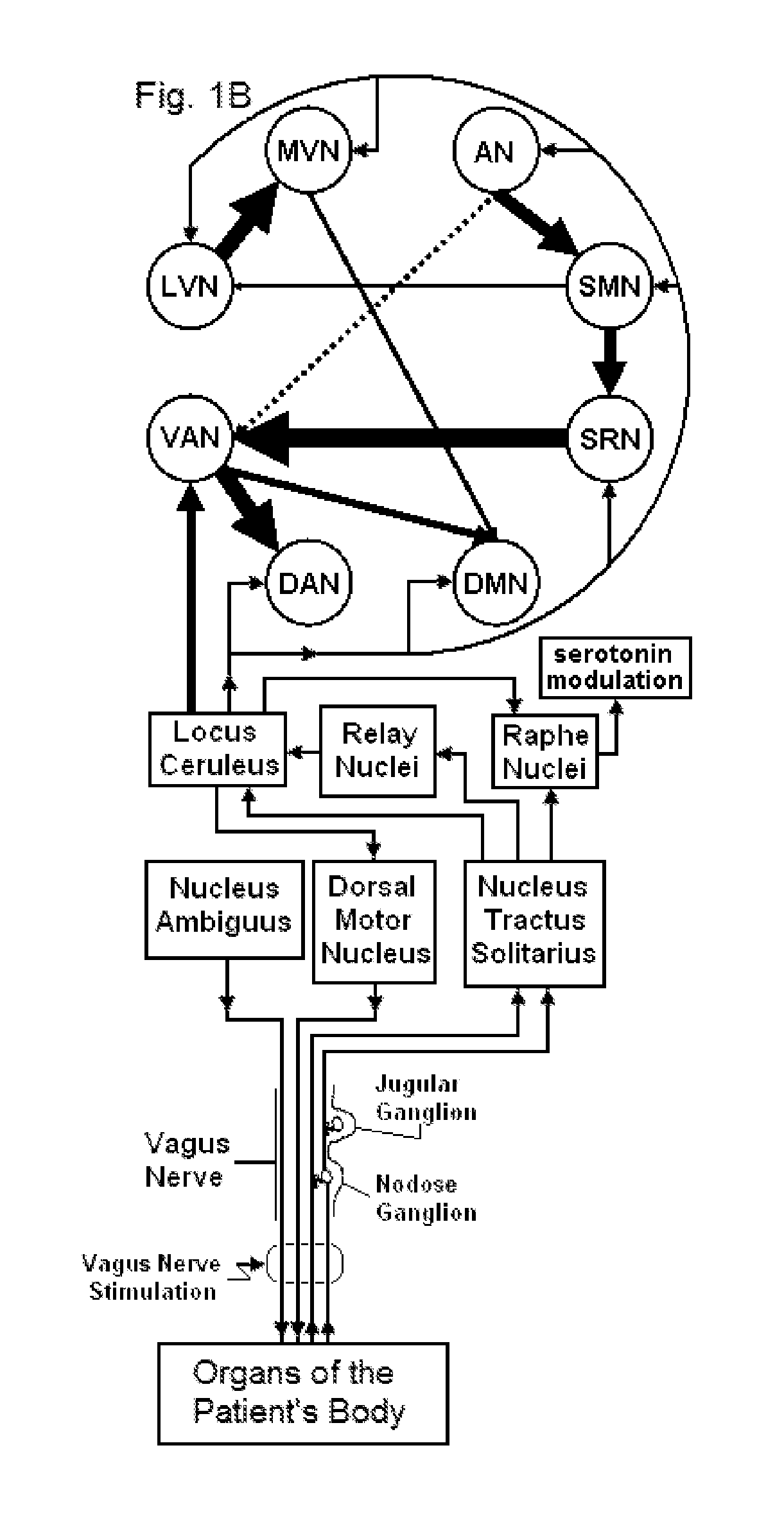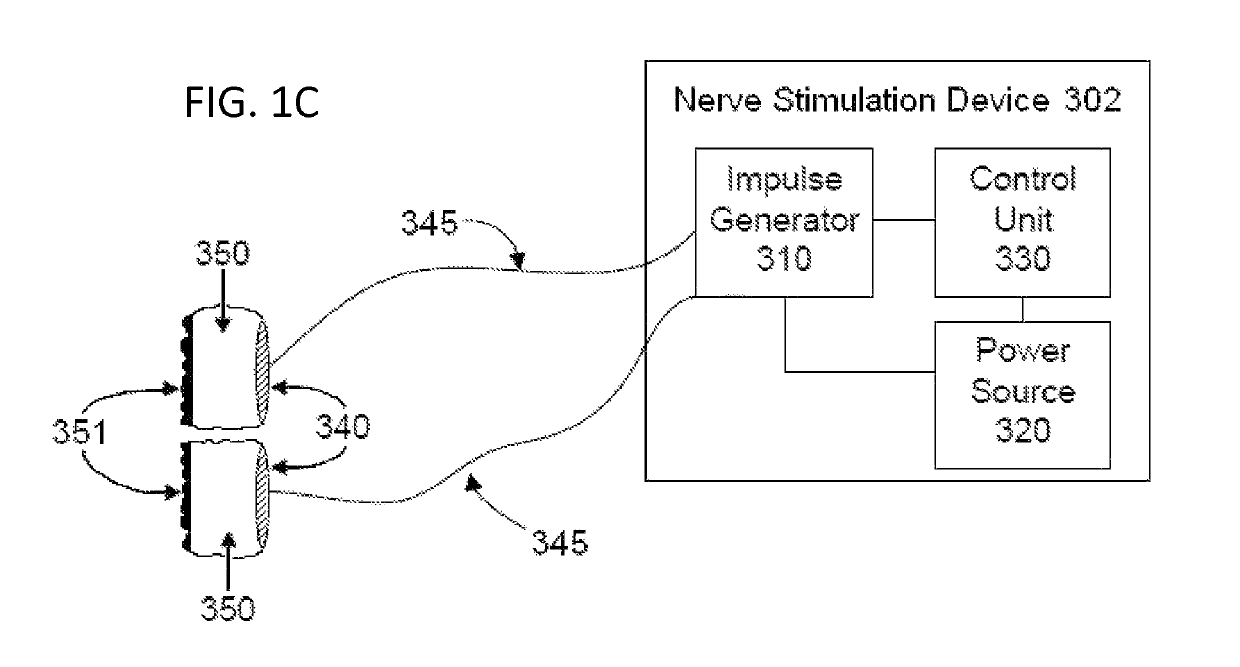Mobile phone for treating a patient with dementia
a mobile phone and dementia technology, applied in the field of dementia delivery, can solve the problems of complex and expensive electric circuits of magnetic stimulators, visit would only compound the aggravation that the patient is already experiencing, and achieve the effect of slowing or arresting the progression and improving the neurodegenerative disease of the patien
- Summary
- Abstract
- Description
- Claims
- Application Information
AI Technical Summary
Benefits of technology
Problems solved by technology
Method used
Image
Examples
Embodiment Construction
[0080]In the present invention, electrodes applied to the skin of the patient generate currents within the tissue of the patient. An objective of one embodiment of the invention is to produce and apply the electrical impulses so as to interact with the signals of one or more nerves, in order to achieve the therapeutic result. Much of the disclosure will be directed specifically to treatment of a patient by stimulation in or around a vagus nerve, with devices positioned non-invasively on or near a patient's neck to treat neurodegenerative diseases, such as such as dementia, Alzheimer's disease, ischemic stroke, post-traumatic concussion, chronic traumatic encephalopathy and the like.
[0081]As discussed in more detail below, electrical impulses are transmitted through an outer skin surface of the patient to the vagus nerve. The electrical impulses are sufficient to modify activity of the vagus nerve such that inhibitory transmitters, such as norepinephrine (NE) and acetylcholine (Ach) ...
PUM
 Login to View More
Login to View More Abstract
Description
Claims
Application Information
 Login to View More
Login to View More - R&D
- Intellectual Property
- Life Sciences
- Materials
- Tech Scout
- Unparalleled Data Quality
- Higher Quality Content
- 60% Fewer Hallucinations
Browse by: Latest US Patents, China's latest patents, Technical Efficacy Thesaurus, Application Domain, Technology Topic, Popular Technical Reports.
© 2025 PatSnap. All rights reserved.Legal|Privacy policy|Modern Slavery Act Transparency Statement|Sitemap|About US| Contact US: help@patsnap.com



